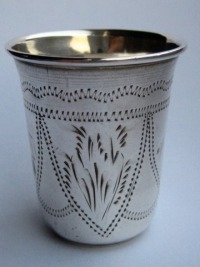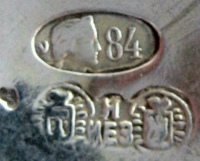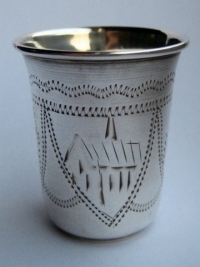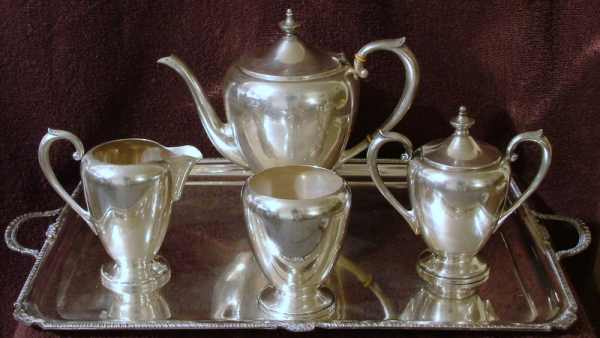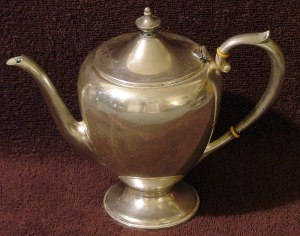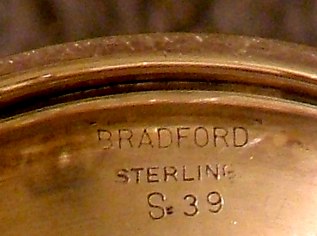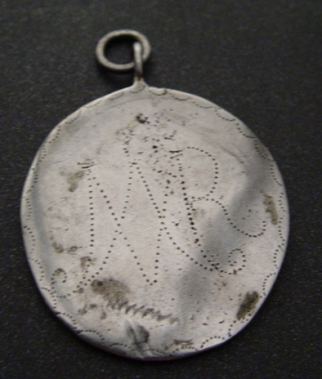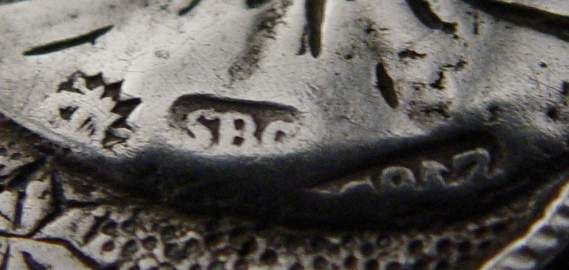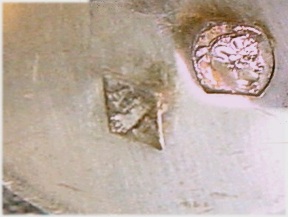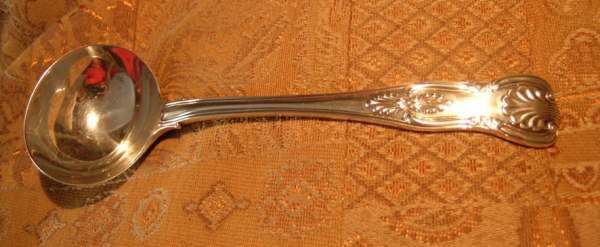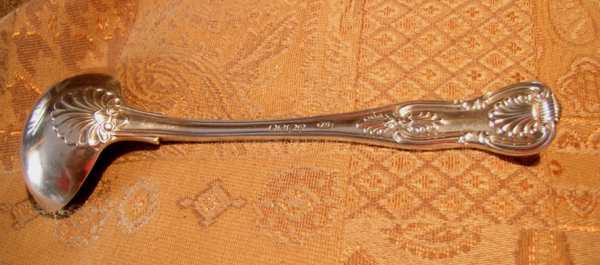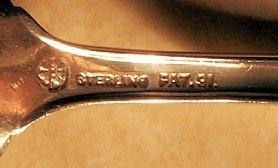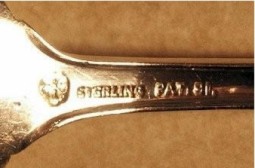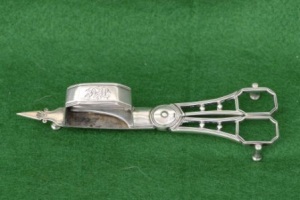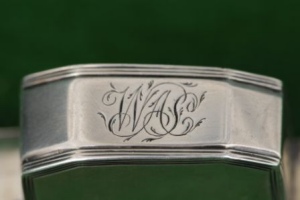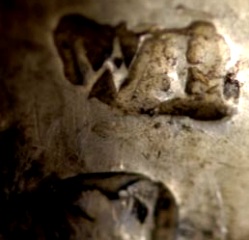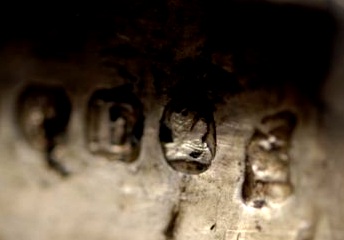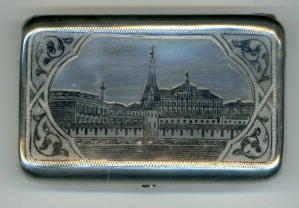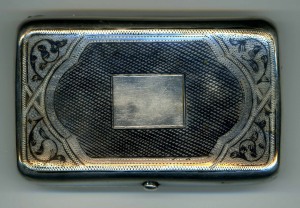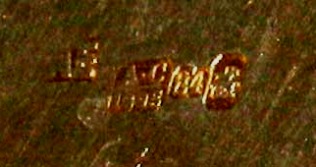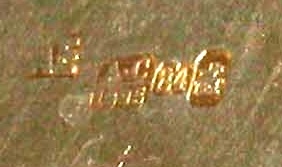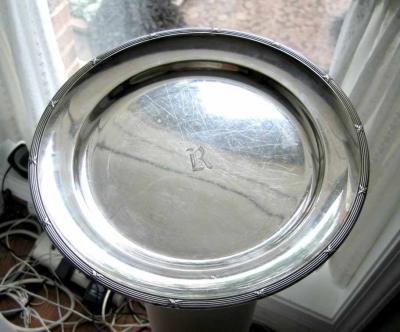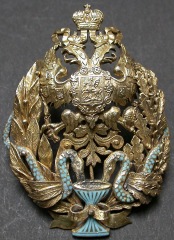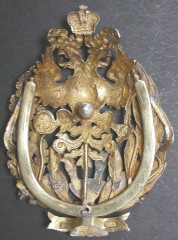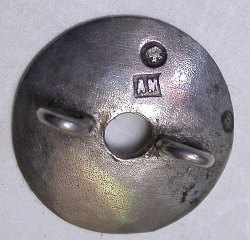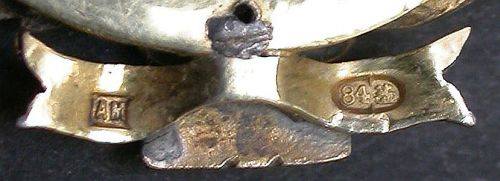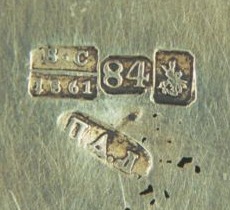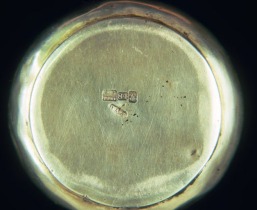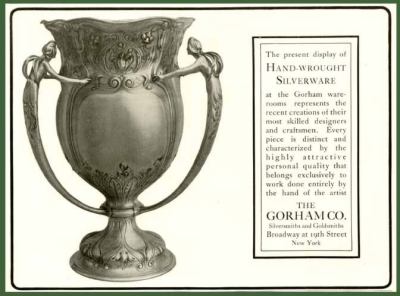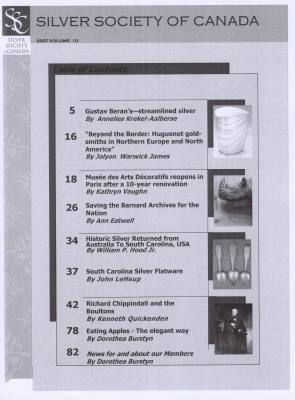 newsletter # 41 - SEPTEMBER 2007
newsletter # 41 - SEPTEMBER 2007www.ASCASonline.org
email: silverassociation@yahoo.it
YOUR GUIDE TO THE SEPTEMBER NEWSLETTER:
articles new members
members' window
|
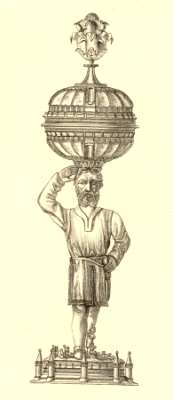 Giorgio Busetto presents:
Giorgio Busetto presents:English Silver Salts The salt was the principal article of domestic plate in English houses of whatever degree. The massive salt cellar, which adorned the centre of the table, served to indicate the importance of the owner and to divide the lord and his nobler guests from the inferior guests and menial, who were entitled to places 'below the salt' and at the lower ends of the table only ..... click here |
New members
Welcome to new ASCAS members:
Allen Carlson - USA
Jeannine Fallino - USA
Gail Howard - New Zealand
Marcus Johnson - USA
Wendy Posner - USA
Sharyn Schulze - USA
James Schumacher - USA
Members' Window # 41
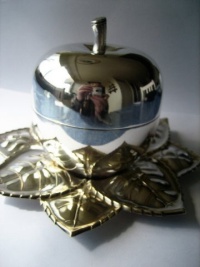
|
Mail to ASCAS: e-mail
silverassociation@yahoo.it
Robert Massart writes:
... Please find attached pictures of a silver Kiddush cup. I
was looking in the Russian hallmarks of the ASCAS dictionary and
found 1 hallmark (KIEV silversmith IEZ nr 197 (P-L 617) which
corresponds seemingly with the hallmark on the cup.
Can you confirm this? Do you have any idea about the date the
cup was manufactured?
I am a real uninitiated concerning Russian hallmarks and maker's
mark, so any help of your side is welcome for me.
Thanks again for your taking care of my request.
Robert Massart
Dear Robert,
you are right: the mark is P-L # 617. If you look on my private
website at
http://www.silvercollection.it/4russiansilverhallmarkB.html
you'll find some other information.
The mark 'unidentified' in P-L corresponds, possibly, to Igor
Zavyandv Successors (I find this note in my files, but I don't
remember where I found this information).
H is the initial of 'Nasdelniki' = Successors
Female head towards right is the mark of Kiev used 1908 - 1926
c.
Giorgio Busetto
Michael Friedman writes:
... I have three pictures of a sterling teapot set I cannot
determine the pattern nor the origin/time period. I have
researched the matter for 6 months and cannot find anyone who
can help me. Maybe you can. The set is marked Bradford Sterling.
It resembles late 19th century English teapot sets I have seen
although I know of no Mfg named Bradford Sterling.
Please examine the photos and help me with whatever info you can
come up with.
Thank you
Michael Friedman
Maurice R. Meslans writes:
... I am trying to identify the marks on the medal in the
pictures enclosed. I believe it is a medaglia "ombellicale" from
Sicily. Although quite honestly I donít know how they got that
name.
Maurice R, Meslans
Dear Maurice
I'm unable to identify the mark of your medal nor do I know if your
item is a " medaglia ombelicale".
What I know is that a coin (or a medal?) was used to restrain
newborns' umbilical hernia (an ancient popular remedy not
approved by modern medicine).
Giorgio Busetto
your spoon was made in France, but I'm unable to identify
the maker. I hope that someone well acquainted with French
maker's marks may reply to your question.
Giorgio Busetto
***ANSWER PUBLISHED IN JANUARY 2011 NEWSLETTER***
Alessandro Colemann writes:
... my little Victorian ladle is marked GA and I'd wish to
know who its maker is.
Any help would be greatly appreciated.
Alessandro Colemann
the maker is George William Adams.
Giorgio Busetto
Hosea Jones writes:
... I have a silver spoon with the hallmark of what appears
to be a four-leaf clover inside a circle on the back of the
handle, just at the base of the handle, before the bowl.
The spoon also says: "STERLING" and "PAT. 92".
I'd need information for a possible match with what I have to
find the manufacturer?
Hosea
Jean-Luc Stas writes:
... I have a trimmer that I have identified with you
beautiful internet site about England Mark. I think it's 1800
silver London work but I don't identified the maker. I think it
is "Wb". When I will know the silversmith, how can having
information about it?
It exist also a monogram on the bowl. what is it? Do you known
the signification?
Thanks for your help.
Jean-Luc
the monogram is, possibly, the initials of an owner. I'm not
aware about a maker "Wb".
According to Jackson there was a mark "WB" belonging to Wilkes
Booth, mark entered 1787. This silversmith was known as maker of
snuffers.
Giorgio Busetto
Wendy Posner writes:
... I'm sending some info on my Russian Niello Cigarette Box.
The Box Measures 2.5" X 4" X .5". It was my grandfather's and I
believe he brought it with him from Europe (?) at the end of the
19thC.
I can't get a good picture of the marks but here's a description:
Left most box - a depressed square with AE impressed - Probably
a maker's mark
Slightly to the left is a series of three boxes each a square
with clipped corners.
The left most box says AC over a line that says 1895 - the
middle box says 84 with upper and lower - in-between the 8 and
the 4 - the far right box has a stamped mark of a helmeted
figure on a horse, carrying a spear.
The background around the marks in the squares is brass in
color.
Top Lid the AE is there in a square and there is a separate mark
of an 84 and the horse/rider sign in a fused set of two circles.
Your thoughts are most appreciated.
Wendy
Your cigarette case is Russian, made in Moskow (St.George on
horse), but I'm unable to find neither the assayer (AC) nor the
maker AE Posnikova-Loseva book.
84 is the fineness degree in zolotnicki. More information about
Russian marks is available in the Russian section of my private
website at
http://www.silvercollection.it/bisrussiansilverhallmarks.html
Giorgio Busetto
...I've another puzzle. A week ago, I picked up a set of
12 charger plates (10.5 inches across) with a full hallmark that
reads GAB - Touch mark of a two handled urn in an oval - NS ALP
on the front of each plate. I believe them to be silver (plate?) and Swedish. Picture is enclosed.
Any help with Manufacturer, pattern, silver content, and/or value would be most helpful.
Wendy
I've no information about maker GAB. I believe that the
meaning of NS ALP is NICKEL SILVER ALPACCA.
Some information about silver plate is available in my website
at
http://www.silvercollection.it/electroplatesilver.html
Giorgio Busetto
Replies to questions
| Fredric
Sinfield receives these replies to his question about
his Russian badge:
( see August Newsletter) Adam Goldsmith writes: ... Fredric Sinfieldís badge was made between 1880
and 1896 in Moscow by Adrian Ivanov who worked between
1893 and 1917. (Postnikova Loseva mark no. 2179)
Norma Young writes:
|
An
addition about the mark of Crystal Stevens'
Russian Cup question:
(see August Newsletter) ... The maker was correctly identified in
Geoffrey Watts - Russian Silversmiths' Hallmarks
as Pyetr Lobanov (1861 - 1883) working in Moscow.
|
"A PAGE per MONTH"
In this column we present a
page (one page only) obtained from makers' brochures,
books, auction catalogs or whatever other printed paper,
which may be of particular interest for ASCAS members.
The images will be published at a "low resolution" level
and for private and personal use only
SILVER SOCIETY OF CANADA
"A WORD per MONTH"
In this column we presents an
abstract from a page of the "What is? Silver Dictionary"
courtesy of
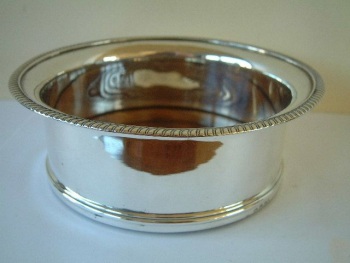
|
COASTER
|
Closing our SEPTEMBER 2007 edition of ASCAS Newsletter I hope you have appreciated its content.
Your comments, suggestions and advice will be of great help.
My thanks to Alessandro Colemann (Italy), Jayne Dye (USA), Michael Friedman (USA), Hosea Jones (USA), Robert Massart (Belgium), Maurice R. Meslans (Belgium), Wendy Posner (USA), Jean-Luc Stas (France), Gordon Tibbles (Canada) for their invaluable contributions.
Giorgio Busetto
Secretary
ASCAS is a community of people having a
common interest in antique silver.
|

